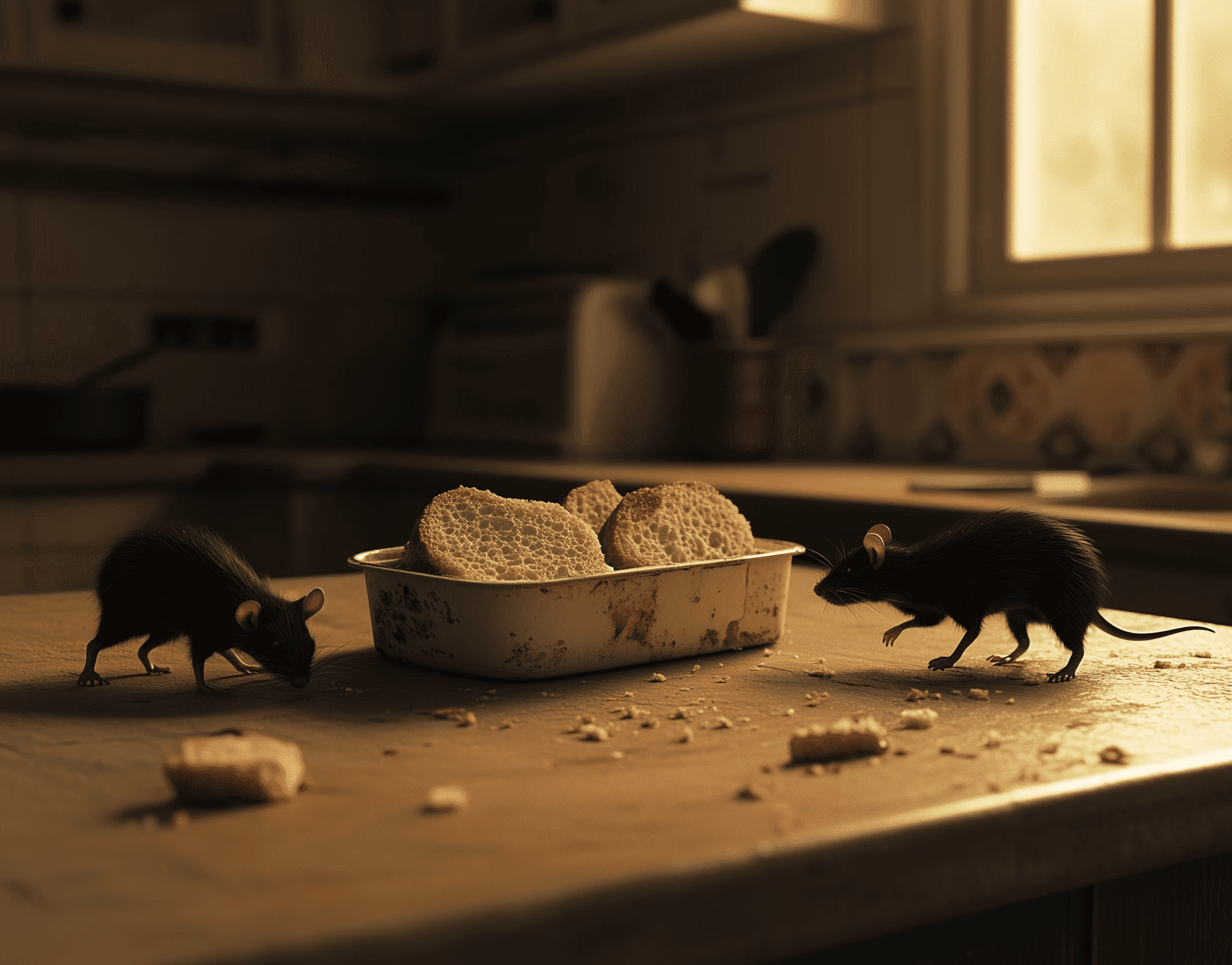Mice
Mice are small rodents that can cause significant problems both in homes and commercial facilities. These animals are known for their ability to enter small spaces and their rapid reproduction rate. The most common species include the house mouse (Mus musculus) and the field mouse (Apodemus sylvaticus). They are capable of transmitting diseases and damaging food and structures by gnawing.
Identification
You can identify a mouse infestation by:
Droppings: Small and dark, often found in food storage areas and hidden corners.
Sounds: Scratching noises, especially at night, can indicate the presence of mice.
Damage: Gnaw marks on food, furniture, and electrical wires.
Clear photos and diagrams in this section will help identify mice and the typical signs of their activity.
Frequently Asked Questions (FAQ)
How can I prevent a mouse infestation? Keeping cleanliness and storing food in sealed containers are crucial steps to prevent the entry and nesting of mice.
What health risks do mice pose? Mice can transmit diseases such as leptospirosis and hantavirus through their urine, droppings, and saliva.
Dangers
Mice are not only a public health problem due to the diseases they can transmit, but they also represent a risk to the integrity of structures and electrical systems due to their gnawing habits.
Control and Prevention
Effective management of mouse infestations includes:
Sealing Entry Points: Identifying and sealing all possible entry points in the home or building.
Traps and Baits: Using traps and baits strategically to capture and eliminate mice.
Regular Cleaning: Removing food scraps and clutter that can attract mice.

